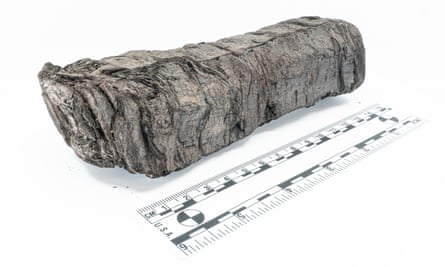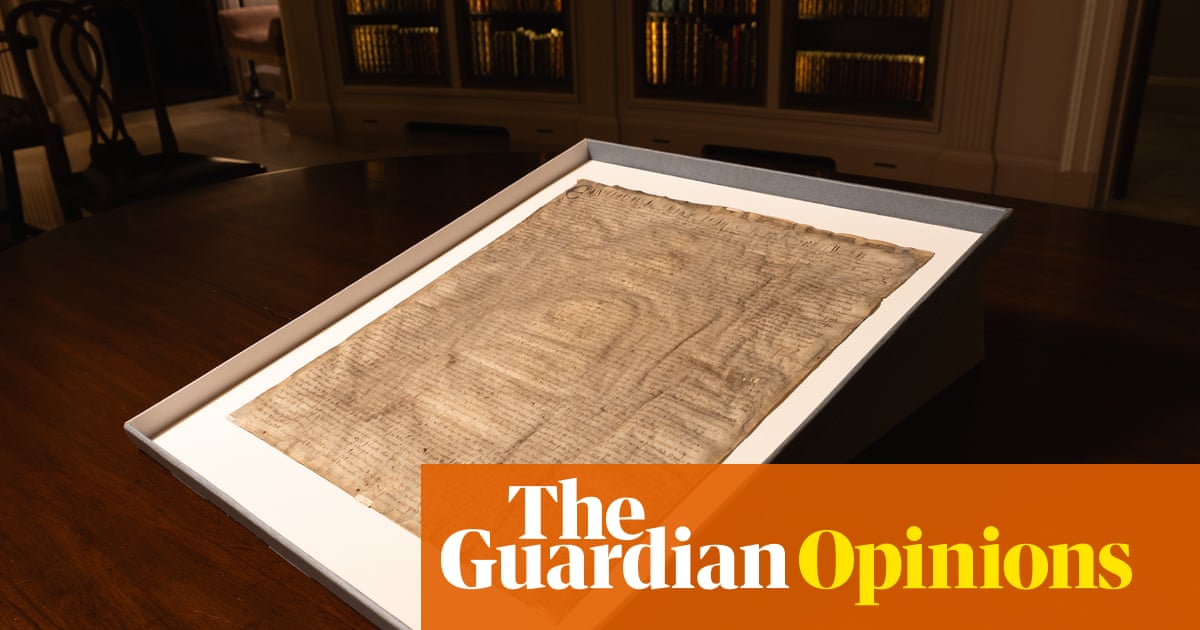Researchers have peered inside an ancient scroll that was burned to a crisp in the volcanic eruption that destroyed Pompeii nearly 2,000 years ago.
The scroll is one of hundreds found in the library of a Roman mansion in Herculaneum, a town on the west coast of Italy that was wiped out when Mount Vesuvius erupted in AD79.
Excavations at the luxury villa, thought to be owned by Julius Caesar’s father-in-law, recovered a vast collection of scrolls, but the material was so charred that the black ink was unreadable and the papyri crumbled to dust when researchers tried to open them.
The papyrus, known as PHerc. 172, is one of three Herculaneum scrolls housed at the Bodleian libraries. The document was virtually unrolled on a computer, revealing multiple columns of text which scholars at Oxford have now begun to read. One word written in Ancient Greek, διατροπή, meaning disgust, appears twice within a few columns of text, they said.
“We are thrilled with the successful imaging of this scroll from the Bodleian libraries,” said Dr Brent Seales, a co-founder of the Vesuvius Challenge, a competition that has spurred dramatic progress in digitally unrolling and reading the scrolls from 3D X-ray images taken at Diamond, the UK’s national synchrotron facility in Oxfordshire. “This scroll contains more recoverable text than we have ever seen in a scanned Herculaneum scroll.”

Last year, Nat Friedman, a US tech executive and founding sponsor of the Vesuvius Challenge, announced that a team of three students, Youssef Nader in Germany, Luke Farritor in the US, and Julian Schilliger in Switzerland, had won the competition’s $700,000 (£558,000) grand prize after reading more than 2,000 Greek letters from another Herculaneum scroll.
Armed with only 3D X-rays of the works – the burned scrolls are too fragile to handle – the winners developed computer software to virtually unwrap the papyrus. They then used artificial intelligence to detect where ink was present on the papyrus fibres and ultimately read passages of the ancient text.
That scroll, thought to have been written by the epicurean philosopher Philodemus, covered sources of pleasure, from music to food, and explored whether pleasurable experiences arose from the abundant or the scarce, the minor or major constituents of a meal, for example.
The Oxford scroll was donated in the 19th century by Ferdinand IV, the king of Naples and Sicily. The ink is more visible in X-rays than that written on other scrolls, suggesting the papyrus was penned in a denser ink.
Richard Ovenden, Bodley’s librarian (the head of Oxford’s Bodleian library), said: “It’s an incredible moment in history as librarians, computer scientists and scholars of the classical period are collaborating to see the unseen. The astonishing strides forward made with imaging and AI are enabling us to look inside scrolls that have not been read for almost 2,000 years.”

.png) 3 months ago
34
3 months ago
34

















































